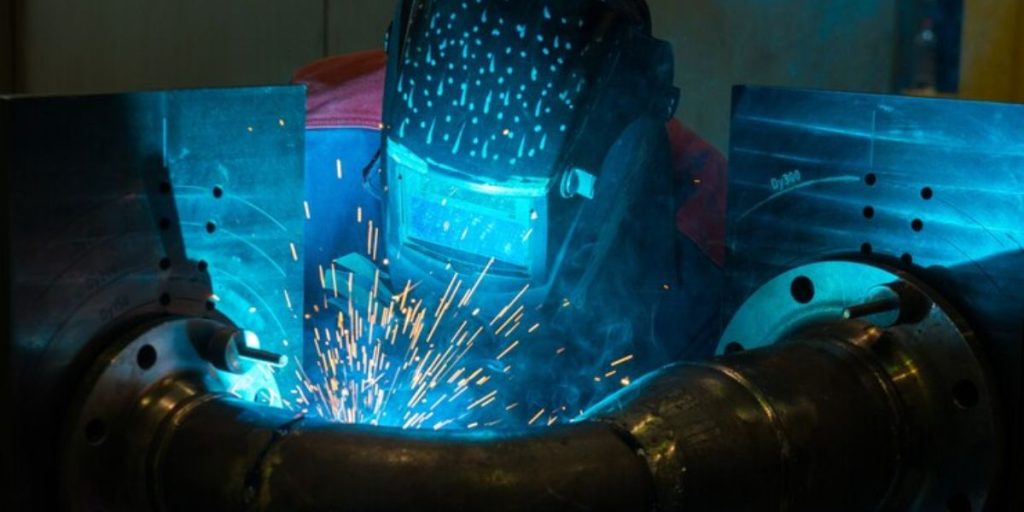Introduction
In the realm of manufacturing and construction, welding stands as a cornerstone, binding structures and components together with strength and durability. Over the years, the art of welding has seen remarkable advancements, propelled by technological innovations aimed at refining processes and enhancing outcomes. In this comprehensive guide, we delve into the exciting realm of new welding technology, exploring its implications, applications, and the future it promises to shape.
Embracing Automation: Robotic Welding
Robotic welding represents a pinnacle of efficiency and precision in the welding industry. These automated systems, guided by sophisticated algorithms and sensors, perform welds with unparalleled accuracy, consistency, and speed. By integrating robotic welding solutions into manufacturing processes, industries can achieve higher productivity, lower costs, and improved quality control.
Welding technology has undergone a transformative evolution with the emergence of cutting-edge processes like laser beam welding and friction stir welding. These methods offer distinct advantages over traditional welding techniques, including superior weld quality, minimal distortion, and the ability to join dissimilar materials with precision. Let’s explore these innovative approaches:
Laser Beam Welding: Illuminating Precision
Laser beam welding harnesses the power of concentrated light energy to melt and fuse materials together. This non-contact welding method excels in joining thin and delicate materials, offering high welding speeds and pinpoint accuracy. With applications ranging from automotive manufacturing to aerospace engineering, laser beam welding is driving advancements in various industries.
Friction Stir Welding: A Solid-State Revolution
Friction stir welding (FSW) represents a revolutionary approach to joining metals without melting them. Instead, it relies on frictional heat and mechanical pressure to create a strong, defect-free bond between materials. FSW is particularly well-suited for welding lightweight alloys and heat-sensitive materials, making it a preferred choice in industries seeking lightweight, durable solutions.
Enhancing Efficiency: Advancements in Welding Equipment
In addition to innovative welding processes, significant strides have been made in the design and functionality of welding equipment. Modern welding machines boast features such as advanced control systems, intuitive interfaces, and enhanced energy efficiency, empowering welders to achieve optimal results with ease.
Navigating Challenges: Addressing Environmental Concerns
As the welding industry evolves, so too do concerns regarding environmental impact and occupational safety. Traditional welding processes often produce hazardous fumes, posing risks to both the environment and welders’ health. In response, manufacturers are developing eco-friendly welding technologies that minimize emissions and promote sustainable practices.
FAQs (Frequently Asked Questions)
Q: What are the primary benefits of new welding technology?
A: New welding technology offers numerous advantages, including improved efficiency, enhanced precision, and reduced environmental impact. By embracing these innovations, industries can streamline processes, boost productivity, and achieve superior weld quality.
Q: How does robotic welding contribute to increased productivity?
A: Robotic welding systems automate the welding process, leading to higher throughput, consistent weld quality, and reduced labor costs. By performing repetitive tasks with speed and accuracy, robots enable manufacturers to achieve greater efficiency and competitiveness in the market.
Q: Is laser beam welding suitable for all materials?
A: While laser beam welding excels in joining certain materials like metals and plastics, its suitability depends on factors such as material thickness, surface finish, and thermal conductivity. Consulting with welding experts can help determine the feasibility of laser beam welding for specific applications.
Q: What safety precautions should welders take when using new welding technology?
A: When working with new welding technology, welders should adhere to safety protocols, including wearing appropriate protective gear, ensuring proper ventilation in workspaces, and undergoing training on equipment operation and maintenance. Prioritizing safety measures mitigates risks and promotes a secure working environment.
Q: How do advancements in welding equipment contribute to improved weld quality?
A: Modern welding equipment incorporates advanced features such as precise control systems, ergonomic designs, and real-time monitoring capabilities, enabling welders to achieve optimal results with consistency and reliability. By leveraging these advancements, welders can enhance weld quality and productivity.
Q: What role does sustainability play in the development of new welding technology?
A: Sustainability is a key consideration in the evolution of welding technology, driving innovation towards eco-friendly processes and materials. By minimizing environmental impact and promoting resource efficiency, new welding technologies contribute to sustainable development goals and long-term environmental stewardship.
Conclusion
The landscape of welding technology is undergoing a profound transformation, fueled by innovation, automation, and sustainability. From robotic welding systems to advanced welding processes, the future of welding holds promise for enhanced productivity, quality, and environmental responsibility. By embracing these advancements and staying abreast of emerging trends, industries can unlock new possibilities and propel themselves towards a brighter, more efficient future.



